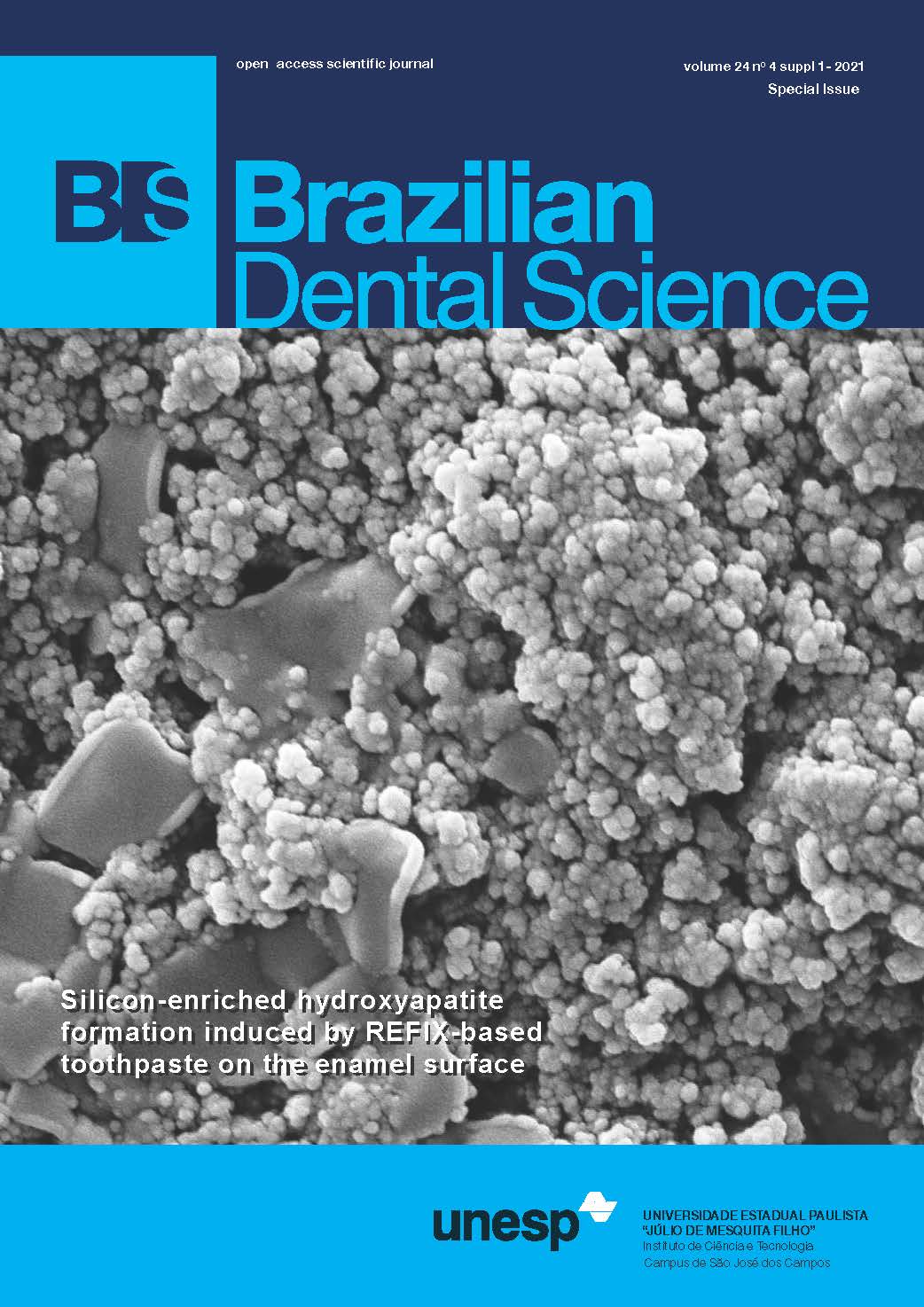The effect of accelerated aging on the color stability and translucency of novel zirconia reinforced rice husk dental composite resin in different infusion media
DOI:
https://doi.org/10.4322/bds.2021.e3046Abstract
Objective: To compare the color stability and translucency of aged and unaged experimental zirconia reinforced
rice husk nanohybrid composite resin (Zr-Hybrid) with a commercialized nanofilled and a microhybrid composite
resin after immersion in four different infusion media. Material and Methods: Three groups of standardized
disc-shaped composite resin with 80 samples per group were prepared as follow: Group 1 (Filtek-Z350-XT),
Group 2 (Zmack-Comp), and Group 3 (Zr-Hybrid). Each group was further subdivided into aged (n=40) and
unaged (n=40) groups. Initial color measurements were taken using a digital spectrophotometer based on CIE
L*a*b* color system. Samples in aged subgroup were subjected to 2500 thermal cycles. Subsequently, all samples
were immersed in four different types of infusion media (n=10): T1 - Distilled water, T2 - Soft drink, T3 - Tea
and T4 - Coffee. After 15 days, color measurements of all samples were measured again. Data were analyzed
using two-way ANOVA followed by Bonferroni and paired sample t-tests with a significance level set at P=0.05.
Results: Unaged Zr-Hybrid showed comparable color change to Zmack-Comp and Filtek-Z350-XT (P=0.181), but
aged Zr-Hybrid demonstrated the lowest color change (P<0.001). Zr-Hybrid exhibited the lowest translucency
value (P<0.001), but no significant color and translucency changes (P=0.051 and P=0.069, respectively) were
observed between unaged and aged Zr-Hybrid. Soft drink had the greatest effect (P<0.001) on color change, while
coffee showed the greatest effect (P<0.001) on translucency. Conclusion: Although Zr-Hybrid showed greater
opacity, it still retained its color stability and translucency after accelerated aging compared to commercialized
microhybrid and nanofilled composite resins. All infusion media caused discoloration and affected the composite
resins’ translucency.
KEYWORDS
Rice husk; Color stability; Composite resin; Translucency; Zirconia.
Downloads
Downloads
Published
How to Cite
Issue
Section
License
Brazilian Dental Science uses the Creative Commons (CC-BY 4.0) license, thus preserving the integrity of articles in an open access environment. The journal allows the author to retain publishing rights without restrictions.
=================




























